RDA and FRBR - Joint Steering Committee for Development of RDA
RDA and FRBR - Joint Steering Committee for Development of RDA
RDA and FRBR - Joint Steering Committee for Development of RDA
Create successful ePaper yourself
Turn your PDF publications into a flip-book with our unique Google optimized e-Paper software.
Slide 10EQUIVALENTFamily <strong>of</strong> WorksDERIVATIVEDESCRIPTIVEMicro<strong>for</strong>mreproductionCopyExactreproductionReprintFacsimileSimultaneous“publication”TranslationEditionsRevisionVariations or versionsAbridgededitionIllustratededitionExpurgatededitionArrangementSlightmodificationsFreetranslationSummaryAbstractDigest DramatizationNovelizationScreenplayLibrettoChange <strong>of</strong> genreAdaptationsParodyImitationsSame style orthematic contentReviewCasebookCriticismAnnotatededitionEvaluationCommentaryOriginalSame workNew workSameExpressionNew ExpressionCataloging Rulescut-<strong>of</strong>f pointNew WorkB. Tillett10 Dec. 2001This picture is from my latest update <strong>of</strong> the taxonomy <strong>of</strong> bibliographic relationships that waspublished by Kluwer 1 in 2001 (<strong>and</strong> in the What is <strong>FRBR</strong>?” brochure). It shows a continuum <strong>of</strong>the relationships within a family <strong>of</strong> works as represented in manifestations moving from left toright. On the left are those that are equivalent, that are from the same expression <strong>of</strong> the work.Once we introduce a change to the content, like a translation, we have a new expression <strong>of</strong>the same work <strong>and</strong> further changes move us to the right, farther away from the original. (Thiswill be reflected in ch. 7 <strong>of</strong> <strong>RDA</strong>.)Once that derivation crosses the magic line <strong>of</strong> becoming more <strong>of</strong> the work <strong>of</strong> another personor corporate body, we consider it a new work, but it is part <strong>of</strong> the family <strong>of</strong> related works, evenwhen the work moves on to be only describing a work in the family at the right end <strong>of</strong> thiscontinuum. The entities in descriptive relationships at the right side <strong>of</strong> this picture, can evenbe considered to be in subject relationships in <strong>FRBR</strong> terminology <strong>and</strong> the conceptual model.The ability to in<strong>for</strong>m the user <strong>of</strong> these related works ties back to the collocating <strong>and</strong> findingfunctions <strong>of</strong> a catalog again. The <strong>FRBR</strong> model reminds us <strong>of</strong> these important relationshipsthat we should reflect in our catalogs <strong>for</strong> our users.1In: Relationships in the Organization <strong>of</strong> Knowledge. – Carol Bean <strong>and</strong> Rebecca Green, eds.– Kluwer, 2001 (ISBN: 07923-68134)


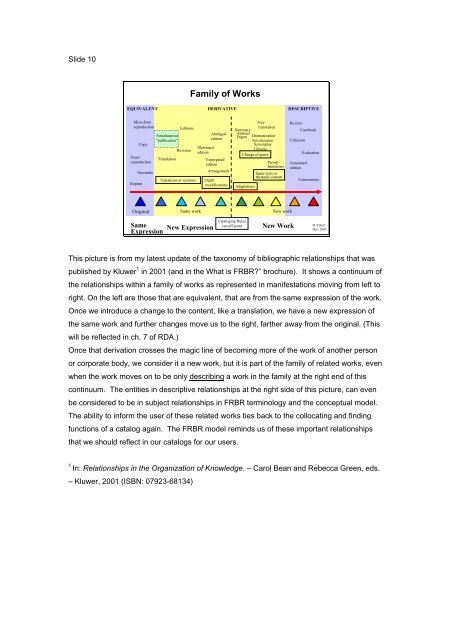

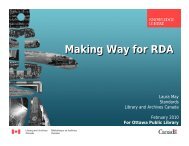
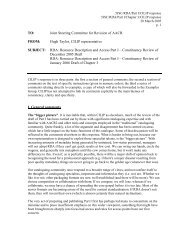
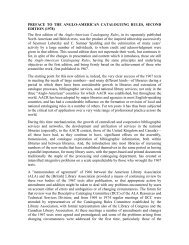
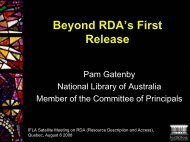

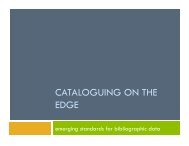
![Presentation slides [PDF] - Joint Steering Committee for ...](https://img.yumpu.com/41621230/1/190x143/presentation-slides-pdf-joint-steering-committee-for-.jpg?quality=85)

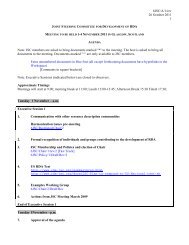
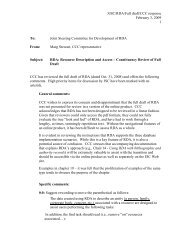
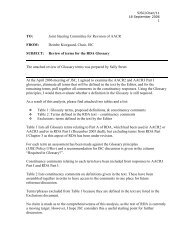
![Presentation slides [PDF] - Joint Steering Committee for ...](https://img.yumpu.com/35256207/1/190x143/presentation-slides-pdf-joint-steering-committee-for-.jpg?quality=85)
